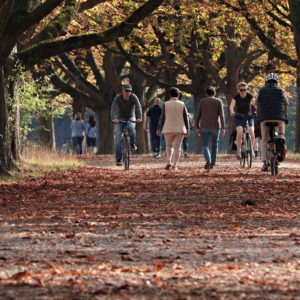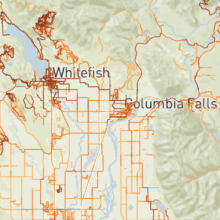- People are more likely to move to Recreation counties than to Non-Recreation counties, particularly in Rural places.
- Households moving into Recreation counties have, on average, higher income than households moving into Non-Recreation counties.
- Recreation counties have, on average, lower earnings per job than Non-Recreation counties, but earnings per job in Rural Recreation counties are growing much faster than in Non-Recreation counties.
- Recreation appears to drive varied economic benefits, including short-term support for tourism-related businesses and longer-term support by recruiting new residents who may be business owners, entrepreneurs, or workers.
Subscribe to our newsletter!
Many rural places have struggled since the recession with population loss, job loss, and growing economic distress.
This study finds that recreation may make the difference between gaining or losing population, particularly in rural counties. Recreation counties are places with a large recreation-related economy, as defined by the U.S. Department of Agriculture’s Economic Research Service. Details are in the full report.
The average Micro and Rural county had more people moving in than out only if it is a Recreation county. Otherwise, the average Micro and Rural county had more people moving out than in, with negative net migration. For example, the average Rural Non-Recreation county had 19.9 people move out per 1,000 residents, whereas the average Rural Recreation county had 1.3 people move in per 1,000 residents.
The greatest difference between Recreation and Non-Recreation counties is for Micropolitan counties, in which Recreation counties had 37 more people moving in per 1,000 residents than Non-Recreation counties had (15.6 people moving out versus 21.6 people moving in).
Every county has its own set of unique circumstances. Users can explore details from this report for any U.S. county or create a broader economic profile for any community, county, or state.
The visualization above shows the differences in household income are statistically significant across all community sizes, and the biggest difference in income is in Micropolitan communities, in which the average household income is $21,000 more in Recreation counties compared to Non-Recreation counties.
Not only are households moving to Recreation counties wealthier, on average, than households moving to Non-Recreation counties, but they also tend to have higher household income than current residents. This is particularly true in Rural Recreation counties where 29 percent of those counties had wealthier households moving in, compared to 4 percent of Rural Non-Recreation counties.
Recreation Counties Have Lower Average Earnings per Job But Faster Growth
If more people are moving to Recreation counties, and many of these people have higher household income, does this translate into higher earnings per job in Recreation counties?
We find that average earnings per job is significantly lower in Recreation counties, with the biggest gap (approximately $5,600) in Metropolitan counties.
The difference in earnings per job between Recreation and Non-Recreation counties appears to be shrinking in Micropolitan and Rural counties.
The difference in growth rates is significant for Micropolitan and Rural counties but not for Metropolitan counties. In Micropolitan and Rural Recreation counties, growth in average earnings per job exceeded the average growth rate in any type of Metropolitan county, whether Recreation or Non-Recreation. In Non-Recreation Micropolitan and Rural counties, average earnings per job grew much more slowly than in any type of Metropolitan county.
Explore Specific Counties
The findings of this study represent averages across the United States; individual counties vary broadly.
Conclusions: Recreation Counties Attract New Residents and Higher Incomes
People want to live in Recreation communities and have been moving to these places much more quickly since the Great Recession ended in 2010. These in-migrants are bringing higher household income, which may be contributing to faster growth in earnings per job in Recreation counties. The influx of higher income households has not eliminated the gap in earnings per job, which remain significantly lower in Recreation counties.
While earnings per job still lag behind in Recreation communities, more rapid growth since the Great Recession may cause earnings per job in Recreation counties to eventually meet or exceed earnings per job in Non-Recreation communities.
The differences between Recreation and Non-Recreation counties generally are greatest in Micropolitan places, followed by Rural places. These findings suggest that Micropolitan communities, often with airports and therefore better connections to population and economic centers, may be able to capitalize more easily on recreation-associated economic benefits. Other research by Headwaters Economics found that the economies in places with easier access to markets via air travel tend to perform more like Metropolitan counties than their Rural peers.
While the differences might not be as great between Rural Recreation and Non-Recreation counties, these findings do suggest the potential for substantial benefits that could make the difference between shrinking and growing population. In many Rural communities, a recreation economy has made the difference between gaining or losing population.
Attracting new residents and higher income households is not without tradeoffs. Many Recreation communities have grown rapidly, leading to an increase in the cost of living for current residents, urban sprawl and more people living on fire-prone lands, and higher infrastructure costs, to name a few challenges. In some places, the rise in cost of living has outstripped the benefits from growing income.
Communities considering investing in recreation as an economic development strategy need to anticipate these tradeoffs. Promoting a town’s amenities without anticipating population growth—and its associated housing and infrastructure needs—can reduce quality of life for current residents.













